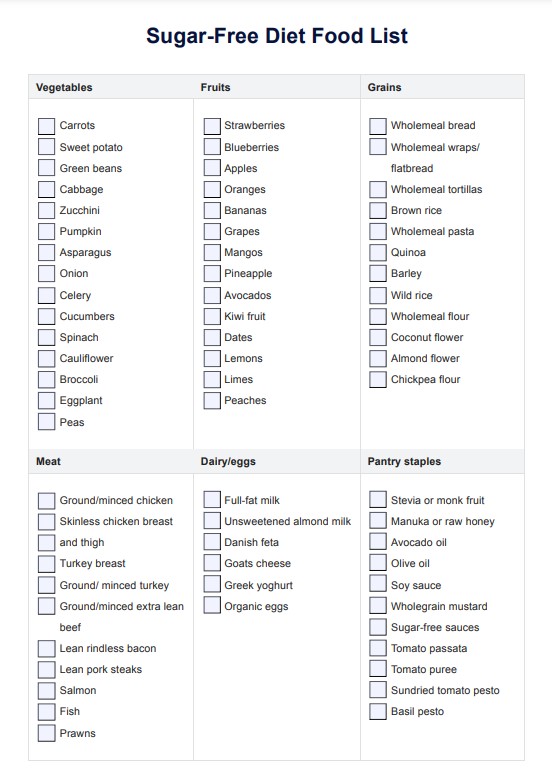Sugar-Free Diet Food Lists are helpful because they provide clear guidance on what foods to choose to avoid added sugars. These lists simplify meal planning and grocery shopping, especially for individuals new to sugar-free diets. They also help make healthier food choices, reduce the risk of consuming hidden sugars often found in processed foods, and promote healthy blood sugar levels.

Sugar-Free Diet Food
A sugar-free diet includes fresh fruits, vegetables, lean proteins, whole grains, and healthy fats while avoiding added sugars and processed foods.
Sugar-Free Diet Food Template
Commonly asked questions
Sugar-Free Diet Food Lists are used as a reference for selecting foods during meal planning and grocery shopping. Individuals can use these lists to identify whole, unprocessed foods that fit within a sugar-free diet, such as fruits, vegetables, lean proteins, and whole grains. They are also helpful in finding alternatives to sugary snacks and beverages, helping maintain a balanced and nutritious diet.
The duration for following a Sugar-Free Diet Food List varies depending on individual health goals and dietary needs. Some people may adopt it as a long-term lifestyle change, while others might follow it for a specific period to achieve health objectives like weight loss or better blood sugar control. It's essential to consult a healthcare provider or dietitian to determine the appropriate duration based on personal health conditions and goals.
EHR and practice management software
Get started for free
*No credit card required
Free
$0/usd
Unlimited clients
Telehealth
1GB of storage
Client portal text
Automated billing and online payments











